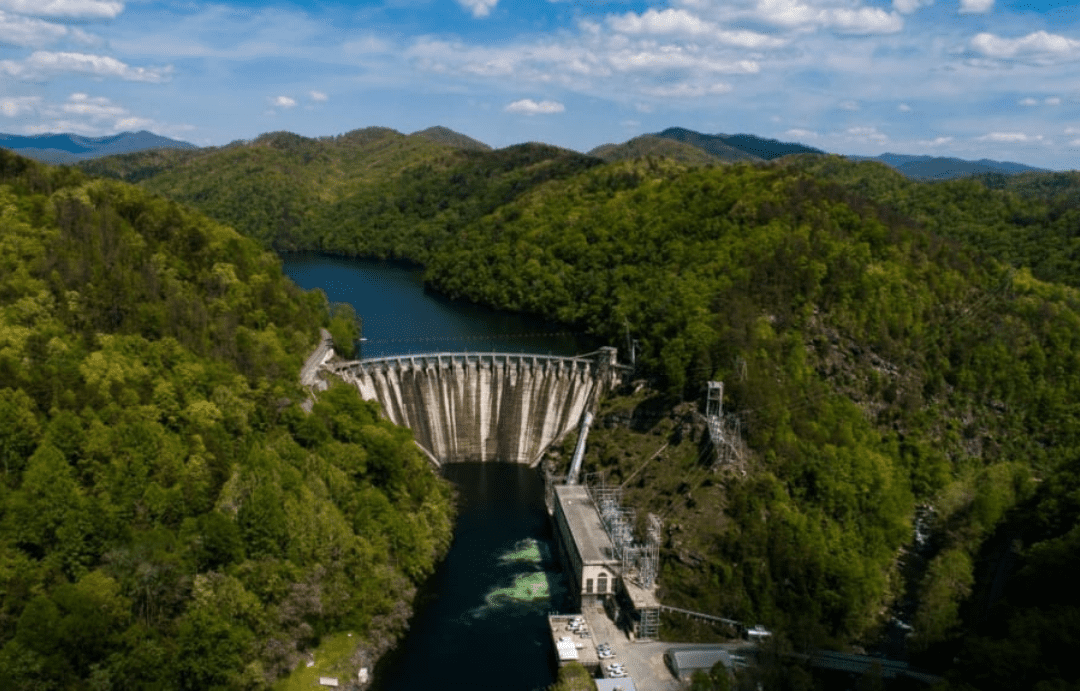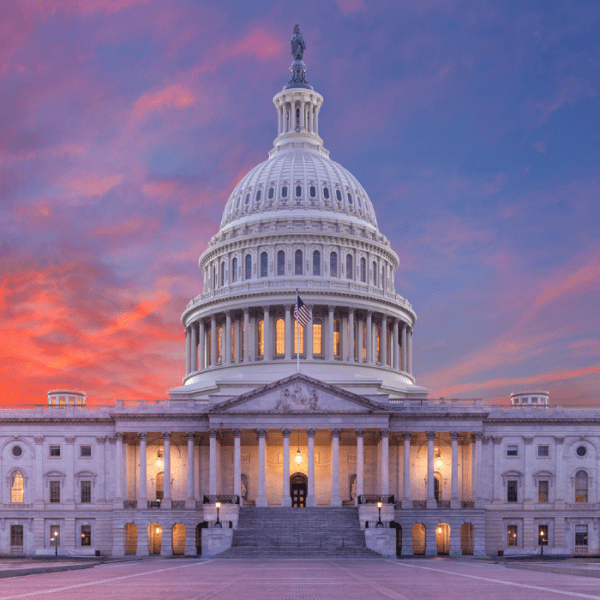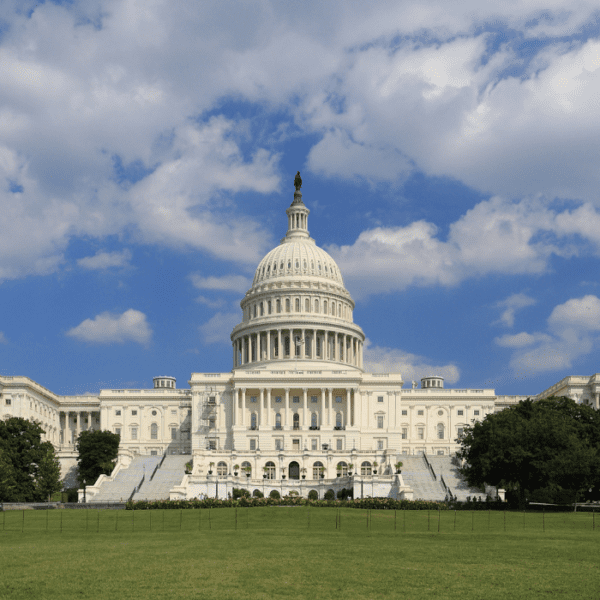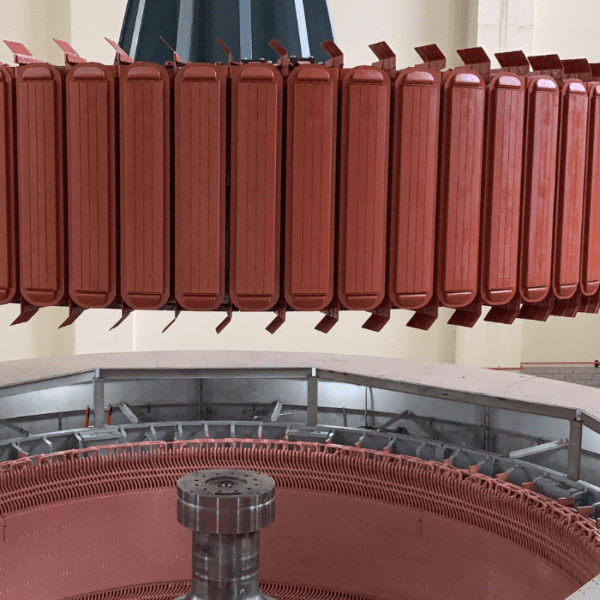Republished with permission from Environmental and Energy Study Institute (EESI)
The Environmental and Energy Study Institute (EESI) sat down with Zolaikha Strong, vice president of government affairs at the National Hydropower Association, to learn more about the Uncommon Dialogue discussions and how hydropower is poised to advance clean energy and grid resilience.
EESI: After over two years of discussions, the hydropower industry recently issued a joint statement with environmental and conservation groups over shared goals for the future of hydropower. What motivated these discussions? And why is collaboration between environmental groups and the hydropower industry important?
Strong: There were two main drivers of these discussions: 1) responding to climate change by elevating the role of hydropower as a clean energy resource and 2) ensuring healthy rivers and environment. It is pretty amazing that the National Hydropower Association, which represents the hydropower industry, is at the same table as American Rivers—it has been a very collaborative process.
This type of negotiated effort can be tough, but the great part is that folks are talking. We are not just presenting documents, we are actually sitting—virtually—and having these conversations, which fosters an understanding of why certain groups want certain things and who they are representing.
Open conversations also lead to an understanding of what has already been accomplished. The hydropower industry, for instance, has invested in environmental stewardship to assure that dams and other components of hydropower projects are safe. These projects are local—they are in tribal communities and local communities where they provide much-needed electricity. We have to guarantee that power is provided in a responsible manner.
I have found that many hydropower supporters are environmentalists; they are fishermen or kayakers, and they have a love for the water and the environment. They try their best to ensure that the hydro facilities they are responsible for are investing in environmental protection.
I think it is appreciated on the other end too because we have heard from conservation groups about their concerns. You need to have those tough conversations to move forward.
Editor’s Note: During NHA’s upcoming Clean Currents conference + tradeshow, American Rivers, the Association of State Dam Safety Officials, and the Stanford Woods Institute for the Environment will share perspectives about these discussions in a special session: “A New Chapter: Finding Common Ground to Expand Hydroelectricity, River Restoration, and Dam Safety.”
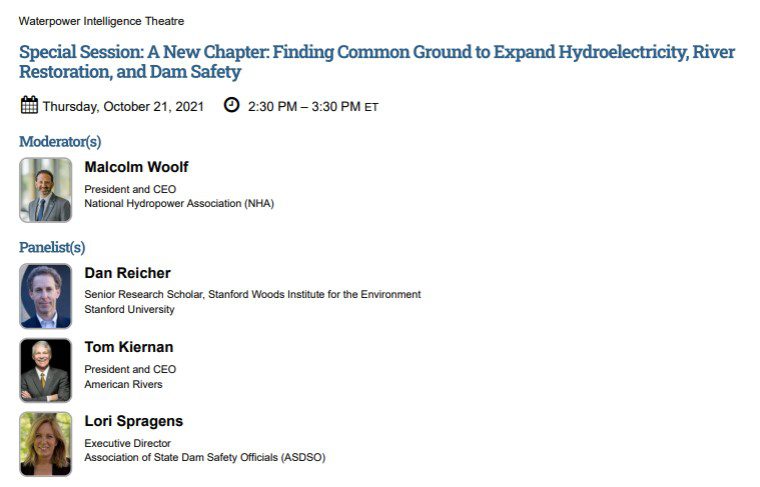
EESI: What features of hydropower make it a unique climate change solution?
Strong: Here is the amazing thing about hydropower: it is reliable. It is unique in that it is a clean energy resource that is able to provide constant power and grid resilience, which is important as we integrate different renewable resources onto the grid.
And it goes beyond the integration of renewable resources.
We are using electricity differently than ever before. Utilities had an understanding of when and where customers were using electricity, but COVID-19 changed that dynamic. We are not in our offices during the day anymore, a lot of us are working from home in different places, and the grid is impacted by that. The more resources on the grid that can provide reliable energy, the better, and those energy resources should be clean. In a lot of communities where hydropower plays a significant role in providing electricity, it keeps the prices down, too.
EESI: Are there downsides to hydropower, and if so, how do you work to mitigate them?
Strong: It goes back to the conversation about the Uncommon Dialogue—it is about finding solutions. Nothing is perfect and there are areas we are looking to improve.
We are working with conservation organizations to understand the environmental impact of hydropower and how to ensure dam safety.
Different parts of the country have different needs from dams and hydropower, and through this Uncommon Dialogue effort, we have been able to get a strong understanding of what everyone’s concerns are. It is a work in progress, but we are moving toward solutions.
EESI: How much room for expansion is there in the hydropower sector? Are there any barriers for the hydropower industry?
Strong: With the Uncommon Dialogue, we are focused on investing in existing dams. We have about 80,000 to 90,000 dams in this country, but only about 2,700 of them include a component to use the impounded water to generate electricity. If some of those existing dams can be retrofitted in an environmentally safe way to add a power generation component, then there is an opportunity to provide more clean energy to communities.
But doing so can be complicated. Stakeholders in the community need to be involved—whether that be individuals living in the town, state, or tribal community. That is where the licensing processing comes in. The Federal Energy Regulatory Commission’s licensing process is very thorough because it ensures all the bases are covered, including impacts on the environment and communities. And this process is taken seriously by the industry.
EESI: How could the bipartisan infrastructure bill and reconciliation bill affect the hydropower industry?
Strong: In 2020, when we released the joint statement, there were seven areas of focus, one of which was on dam rehabilitation, retrofits, and removals. We also developed four spending recommendations for federal dam infrastructure that played a key role in a lot of legislative vehicles that are out there right now, including the infrastructure bill.
These recommendations were to:
- increase federal financing to improve dam safety
- leverage the tax code to include a 30 percent investment tax incentive for environmental improvements and grid flexibility
- create a public source of funding for the removal of old dams
- invest in existing dams and relevant research programs
Some of these features are also incorporated into the bipartisan infrastructure bill, which creates a new grant program that provides $553 million to improve environmental protection, grid resilience, and dam safety. It also provides $125 million to incentivize adding a hydropower component to existing, non-powered dams and $75 million for hydropower efficiency improvements.
In the reconciliation bill, we are advancing the 21st Century Dams Act (H.R.4375/S.2356) that moved forward in the House of Representatives and the Senate. It would accelerate dam rehabilitation, retrofit, and removal to improve public safety, clean energy, and river health.
Another effort to advance in reconciliation is the Maintaining and Enhancing Hydropower Act (S.2306), which would provide a 30 percent investment tax credit for hydropower.



